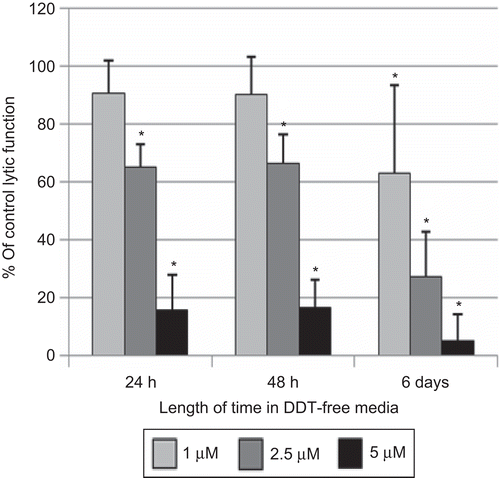Figures & data
Figure 1. Effects of triclosan (TC) exposures on the ability of natural killer (NK) cells to lyse tumor cells. NK cells were exposed to 0.5 – 10 µM TC for 1 h, 24 h, 48 h, or 6 days. To combine results from separate experiments (using cells from different donors) the levels of lysis were normalized as the percentage of the lytic function of the control cells in a given experiment. Results were from three separate experiments using different donors (triplicate determinations for each experiment; n = 9, mean ± SD). *Statistically significant change as compared to control cells at that same length of incubation (P < 0.05).
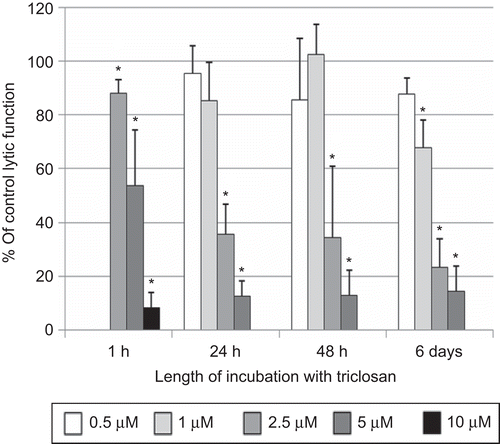
Figure 2. Effects of 1-h exposures to triclosan (TC) followed by 24 h, 48 h, or 6 days in TC-free media on the ability of natural killer (NK) cells to lyse tumor cells. NK cells were exposed to 2.5–10 µM TC for 1 h. Results were from at least three separate experiments using different donors (triplicate determinations for each experiment; n = 9, mean ± SD), as described in . *Statistically significant change as compared to control cells at that same length of incubation (P < 0.05).
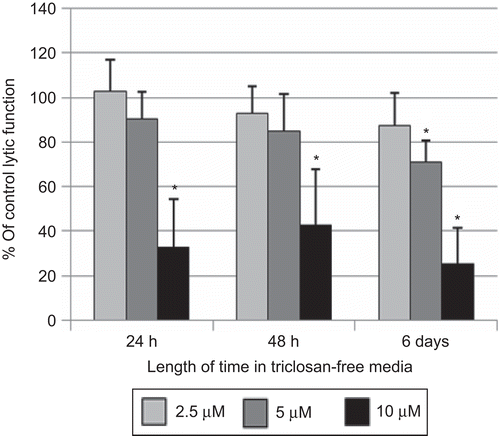
Figure 3. Effects of nonylphenol (NP) exposures on the ability of natural killer (NK) cells to lyse tumor cells. NK cells were exposed to 1–10 µM NP for 1 h, 24 h, 48 h, or 6 days. Results were from three separate experiments using different donors (triplicate determinations for each experiment, n = 9, mean ± SD), as described in . *Statistically significant change as compared to control cells at that same length of incubation (P < 0.05).
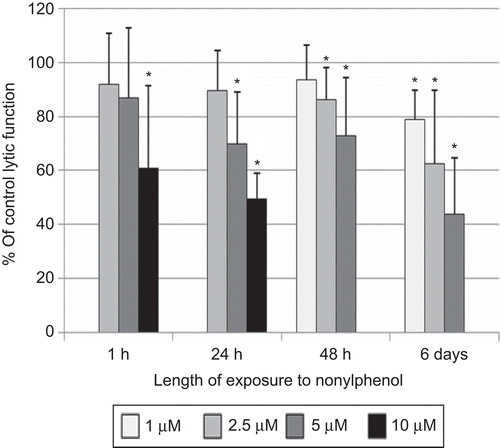
Figure 4. Effects of 1-h exposures to nonylphenol (NP) followed by 24 h, 48 h, or 6 days in NP-free media on the ability of natural killer (NK) cells to lyse tumor cells. NK cells were exposed to 2.5–10 µM NP for 1 h. Results were from at least three separate experiments using different donors (triplicate determinations for each experiment; n = 9, mean ± SD), as described in . *Statistically significant change as compared to control cells at that same length of incubation (P < 0.05).
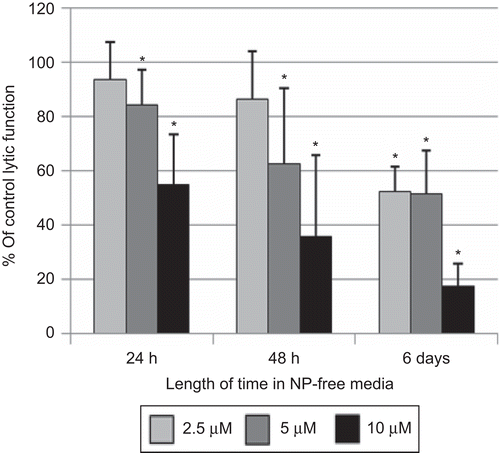
Figure 5. Effects of DDT exposures on the ability of natural killer (NK) cells to lyse tumor cells. NK cells were exposed to 0.25–10 µM DDT for 1 h, 24 h, 48 h, or 6 days. Results were from three separate experiments using different donors (triplicate determinations for each experiment; n = 9, mean ± SD), as described in . *Statistically significant change as compared to control cells at that same length of incubation (P < 0.05).
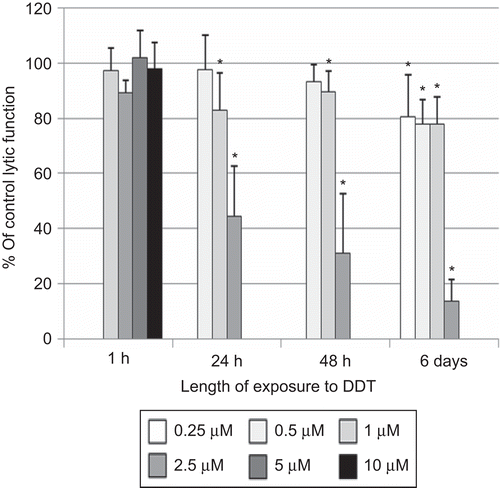
Figure 6. Effects of 1 h exposures to DDT followed by 24 h, 48 h, or 6 days in DDT-free media on the ability of natural killer (NK) cells to lyse tumor cells. NK cells were exposed to 1–5 µM DDT for 1 h. Results were from at least three separate experiments using different donors (triplicate determinations for each experiment; n = 9, mean ± SD), as described in . *Statistically significant change as compared to control cells at that same length of incubation (P < 0.05).
